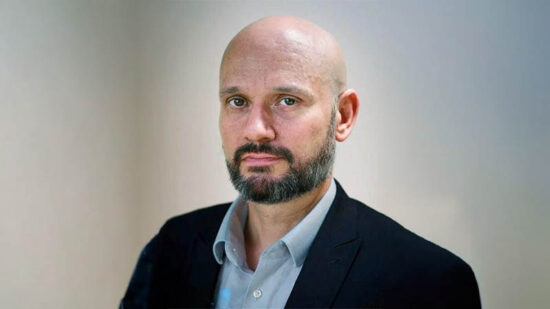Yoram Lustig, head of multi-asset solutions, EMEA and Latam at T. Rowe Price, is a self-described late starter when it comes to running money. Having started out his career as a lawyer, it wasn’t until his early 30s that he took on his first role in the investment world when he joined Merrill Lynch’s multi asset team in 2002.
Making up for lost time, just one year later, he was given responsibility for heading the group’s portfolio management team and, in 2004, he found himself head of the team following the departure of his boss, Peter Stanyer.
“It was very much a case of being thrown in at the deep end,” said Lustig. “I moved to the UK in 2000, did an MBA at the London Business School, and not knowing what to do next, I did an internship at Merrill Lynch.”
However, since doing the internship and taking the role full-time, Lustig noted that market conditions could not have been more starkly different.
“In 2001, everyone was happy, markets were bullish, and head counts in the office were high. When I joined full-time in 2002, it was just after the TMT crash, and everything was doom and gloom. I went to New York to do my training and there was one completely darkened floor, with one fluorescent light flickering, and just one desk with a couple of people working.”
However, rather than be put off, it was working so closely with Stanyer in his first year that Lustig attributes much of his career success. Namely, the launching of a multi-asset platform, acquiring skills around asset allocation and manager selection, and, crucially, how to combine different asset classes.
“Back then, we didn’t have the systems we have today,” he said. “When I joined, I put about 20 Excel spreadsheets together, which was how I managed my portfolios, measured risk, and learned how to calculate performance. It forced me to learn, and when you do this, you get a better perspective on how things work.”
A year later, in 2003, Stanyer left, and Lustig found himself thrust into the role of head of portfolio construction. It’s safe to say in the 23 years since, he has not looked back. In 2009, Lustig left Merrill Lynch to take the head of multi-asset role at Aviva Investors, before taking the role of head of multi-asset investments UK at AXA IM in 2013. In May 2017, he joined T. Rowe Price, as head of multi-asset solutions, EMEA, where we pick the story up again.
Past
However, before looking at where we are today, what were some of the key events from the first two decades that Lustig looks back at being instrumental in terms of the investor he is today?
“The experience of living through the aftermath of the TMT bubble burst was important, but nothing has been the same since the global financial crisis in 2008; it completely changed everything,” he said.
“It sounds a cliché, but investing is an art and a science, and I feel too many investors focus on the science bit – namely the maths, number crunching, and model building. However, investing is so much about psychology and understanding the behaviour of markets; it’s about fear and greed.
“Maths skills and understanding economics will only take you so far; at the same time, you need intuition for markets and understand that what some people think is good news can be bad news for me and my investments. So, as an investor, I must stay humble and live with regret. Every day is a school day, and I always keep learning.”
One of those lessons learnt over the past two decades is the power of diversification. However, after bonds and equities fell in tandem in 2022, it led to many questions about whether the traditional 60/40 balanced portfolio model of holding equities and bonds was ‘dead’.
Present
It’s a topic close to Lustig’s heart, and while he doesn’t believe it is dead, he does think it needs to be modernised to adapt to today’s market environment.
“There’s a lot of things we can do to improve how most people in the UK run a 60/40 portfolio,” he said. “Historically, investors have tended to be biased towards stocks in their own country for familiarity and ease of implementation. However, it is now just as easy to get exposure to major markets all over the globe.”
For Lustig, focusing a significant part of the portfolio’s 60% equity allocation on the UK means constraining it to an “increasingly small opportunity set” in global terms. He noted that UK stocks now make up less than 3.5% of the MSCI All Country World Index (MSCI ACWI), a widely used global equity benchmark.
“Concentrating a portfolio in the UK leaves investors at risk of missing out on some of the key drivers of technological change, which has played a major role in propelling markets higher in recent years,” he said. “In the future, there are simply many more opportunities in the US, relative to the UK, in terms of innovation. The UK market is more focussed on ‘old economy’ stalwarts in areas such as financials, consumer staples and energy.”
Regarding the 40% fixed income bucket, Lustig believes home bias is an even more significant problem, and again, the solution is to go more global.
“Having a home bias in bonds can hurt investors, and what happened with the mini-Budget of October 2022 is the perfect example of just such a country-specific shock,” he said. “While 2022 was a difficult year for major government bond markets, the losses endured by investors in gilts were much larger – due to the sudden collapse in market confidence in the revenue and spending plans of the government of the then-Prime Minister Liz Truss.”
Lustig’s solution is to again go more global within T. Rowe Price’s bond weighting, based on the belief that a broader range of exposures is better placed to act as an ‘anchor’ for multi-asset portfolios and then hedging the currency back to sterling. Exposure to safe-haven currencies, such as the US dollar and Swiss franc, can also serve as a diversifier of equity risk.
Future
With these methods in mind, where does Lustig see the major challenges as we move through the early part of 2025? Given his global approach, there is little surprise that a certain Donald Trump is front and centre of his thinking.
“I never really spoke so much about a US president before, as usually they don’t have big impacts on the market or the economy,” he said. “But this time, I think it’s fair to say that it truly is different.
“I don’t think anyone knows what he is going to do, and there are positives and negatives on what his presidency might look like. While I am not sure everything he says will happen, one of the concerns last year was that we would not get a clear result of the US election, which would lead to a lot of disruption.
“The good news is this didn’t happen, and we got a clear-cut result, and I’m hopeful there will be some positives for us. Whatever happens, investors need to prepare to be entertained!”
Finally, looking at T. Rowe Price’s plans in the adviser space, in January 2024 the firm was chosen by Mattioli Woods to develop an income-focused model portfolio for the wealth manager’s clients. So, how do collaborations like this help address the evolving needs of financial advisers and their clients?
“Collaborations between global asset managers and UK financial advisers benefit both sides,” argued Lustig. “The financial advisers have the distribution network, and they know the market and what their clients need, so they bring that knowledge.
“What we as an asset manager bring to the party is awareness of the need to be more global and global asset management expertise. When a firm partners with us they get the benefit of a huge resource that we can bring to them. We become an extension of their investment team.”
Additionally, Lustig believes that one of the biggest opportunities and challenges that advisers face revolves around retirement and the ageing global population.
“We manage more than $450bn in retirement strategies across the US, Japan, Korea, Canada and in the UK,” he said. “We can consider the different risks savers face during decumulation and give advisers all this modelling and experience to ensure what they provide to their clients is both appropriate, customised and in line with the FCA’s Thematic Review.
“We think this allowance for personalisation is a win-win-win-win for all: the client, the advisor, the FCA and us.”
Lustig said if he had a time machine, he would tell his four-year-old self to learn to play an electric guitar and become the lead guitarist in a rock band. While the multi-asset world might not be rock ‘n’ roll, for the man who started out as a lawyer, it’s clear this late starter is keen to make up for lost time.








